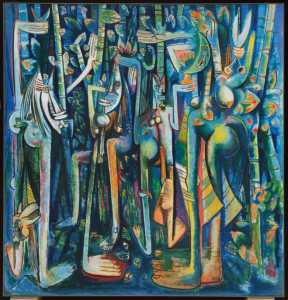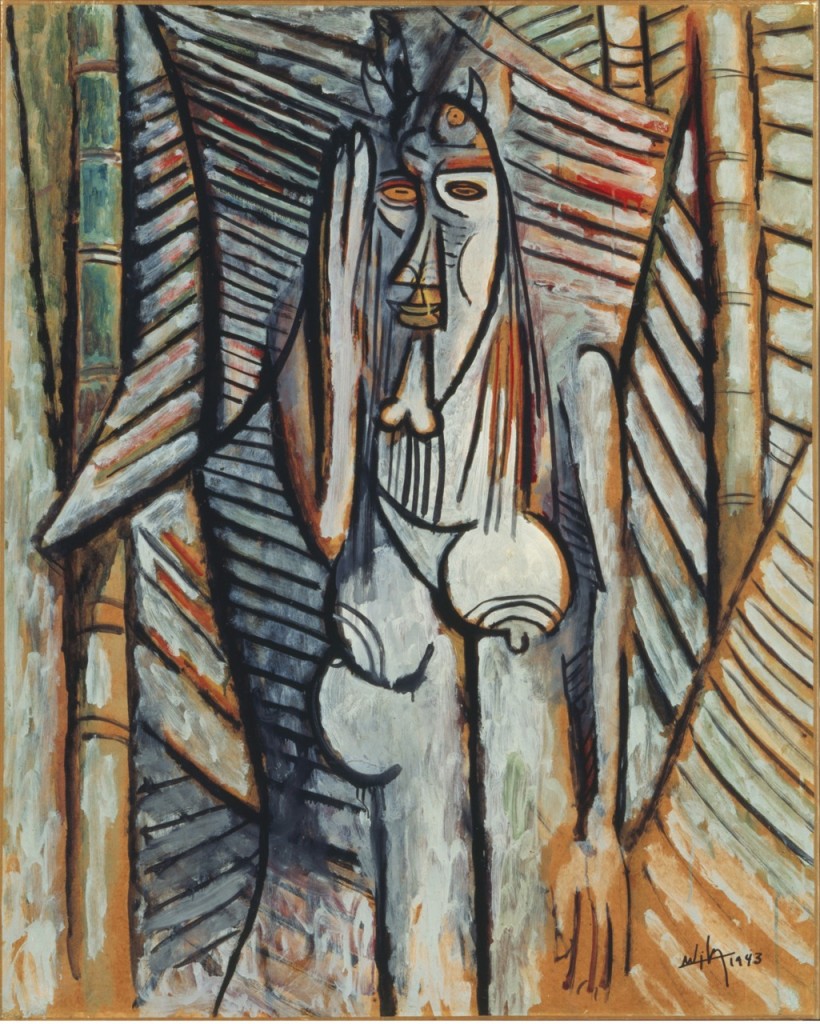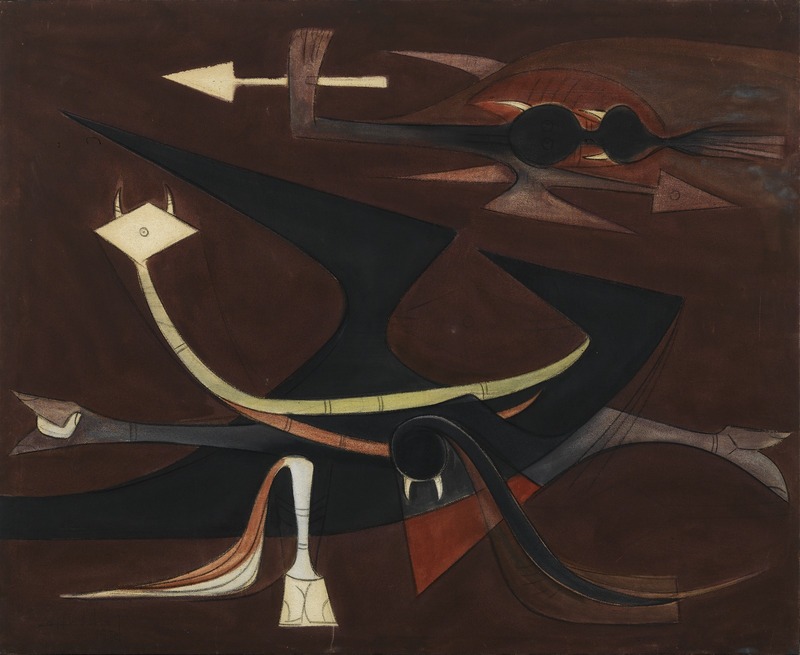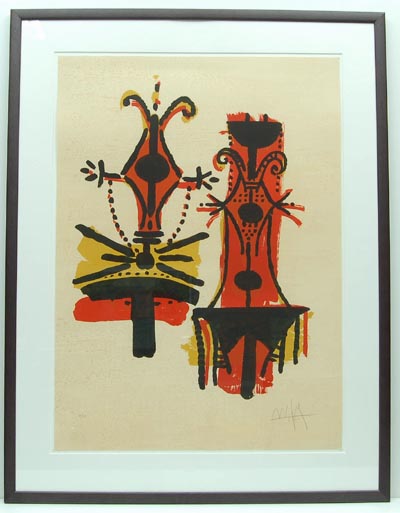
Wifredo Lam
Centre Pompidou, Paris
30 September 2015 – 15 February 2016
La Jungla, 1943.
About the exhibition:
The Centre Pompidou is devoting an in-depth retrospective to the work and career of the painter Wifredo Lam (1902 — 1982), from the 1930s to the 1970s. The exhibition aims to reposition the Cuban artist’s work within an international history of modern art, to which he made a key contribution in both Europe and the Americas.
Le Bruit, 1943.
A WIDE-RANGING EXHIBITION
Through more than 400 works (paintings, drawings, photographs, reviews and rare books), the exhibition offers a completely new overview of the artist’s work in a chronological circuit: Spain, 1923-1938; Paris-Marseille, 1938-1941, Cuba and the Americas, 1941-1952, Paris, Caracas, Havana, Albissola, Zurich, 1952-1961, Paris and Albissola, 1962-1982. The retrospective features an outstanding loan from the MoMA in New York: La Jungle, 1943, one of the artist’s landmark works.
Pas Mimétiques, 1950.
A LOOK BACK OVER ALL THE PERIODS OF LAM’S SINGULAR CAREER
Covering his early years in Cuba, and the time he spent in Spain from 1924-1938 (many works from this period were later found in Madrid), to the dazzling series of engravings in the Sixties and Seventies, the exhibition sheds new light on his major works after his “return to the homeland” (1942 -1952), in the cultural and political context of the period. The exhibition circuit follows the different periods during the course of the artist’ life and work, as he met various intellectuals and poets who profoundly influenced the century.
Pour Jorn, 1976.
About Lam:
Wifredo Lam born 1902 [- 1982]
Untitled, about 1940.
Surrealist painter born in Sagua la Grande, Cuba, of a Chinese father and a mother of mixed African, Indian and European origin. Studied at the Academy of San Alejandro in Havana 1920-3, then went in 1924 to Madrid where he worked in the studio of Fernando Alvarez de Sotomayor, the Director of the Prado, and also in the evenings at the Free Academy. Left Spain in 1938 after taking part in the defence of Madrid, and moved to Paris. First one-man exhibition in Paris at the Galerie Pierre Loeb 1939. Friendship with Picasso, who enthusiastically encouraged him, and with Breton and the Surrealists. Became interested in Africansculpture. Fled in 1941 to Martinique with Breton, Masson and Lévi-Strauss, then returned to Cuba where his work was influenced by savage rituals and the tropical jungle. Visited Haiti in 1945 and 1946 and discovered the Voodoo cult; later in 1946 met Gorky and Duchamp in New York and returned to Paris. 1947-52 in Cuba, New York and Paris; left Cuba in 1952 to live in Paris. Since 1960 has also worked regularly at Albisola Marina, Italy. Awarded the Guggenheim and Marzotto Prizes 1964-5. Lives in Paris and Albisola Marina text Tate London).




